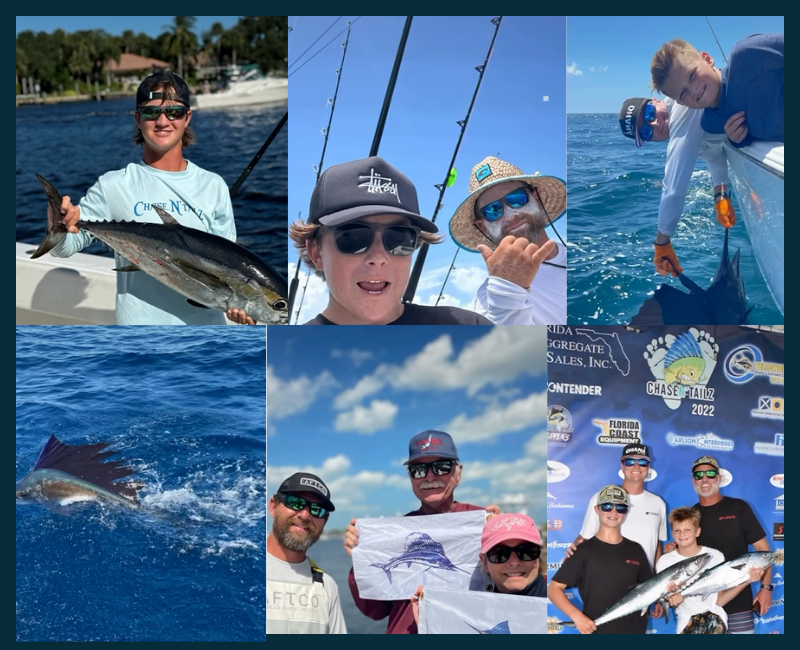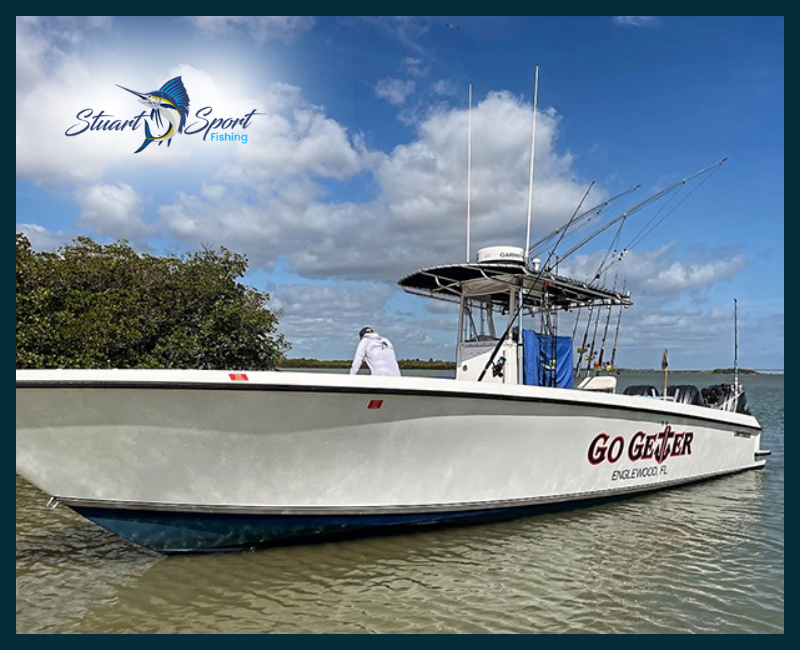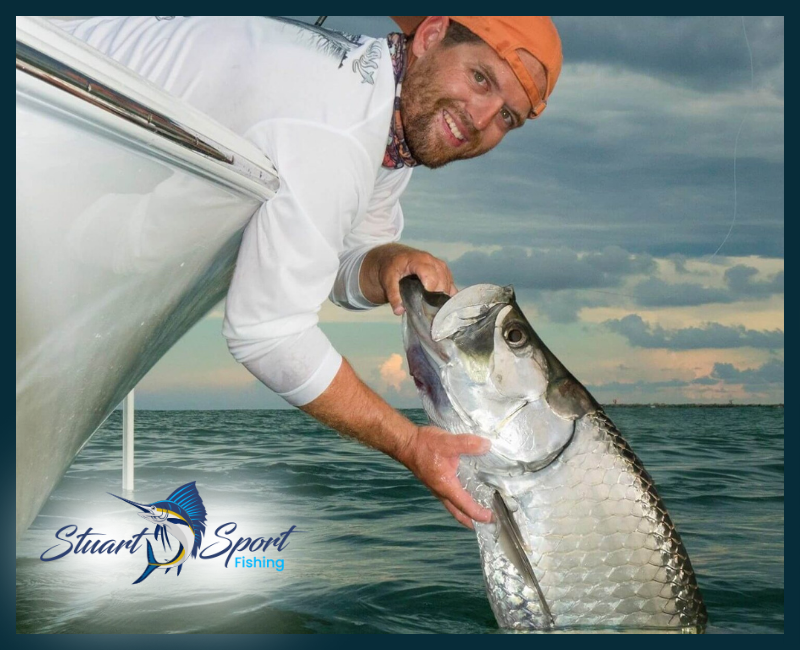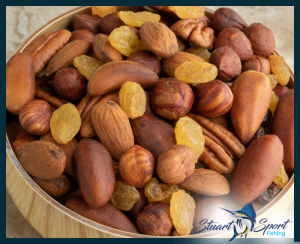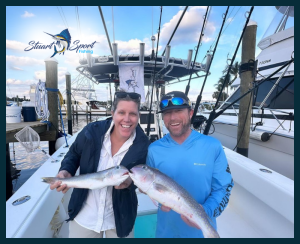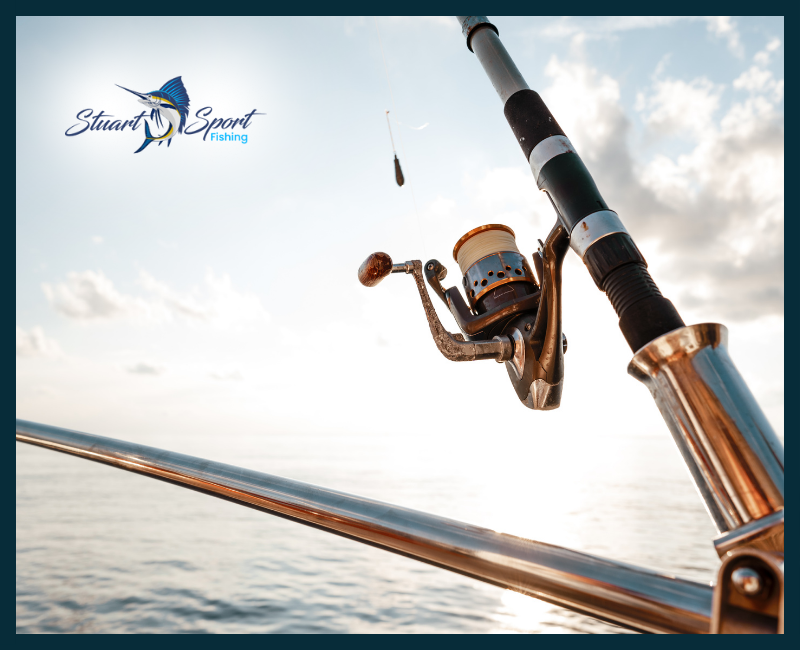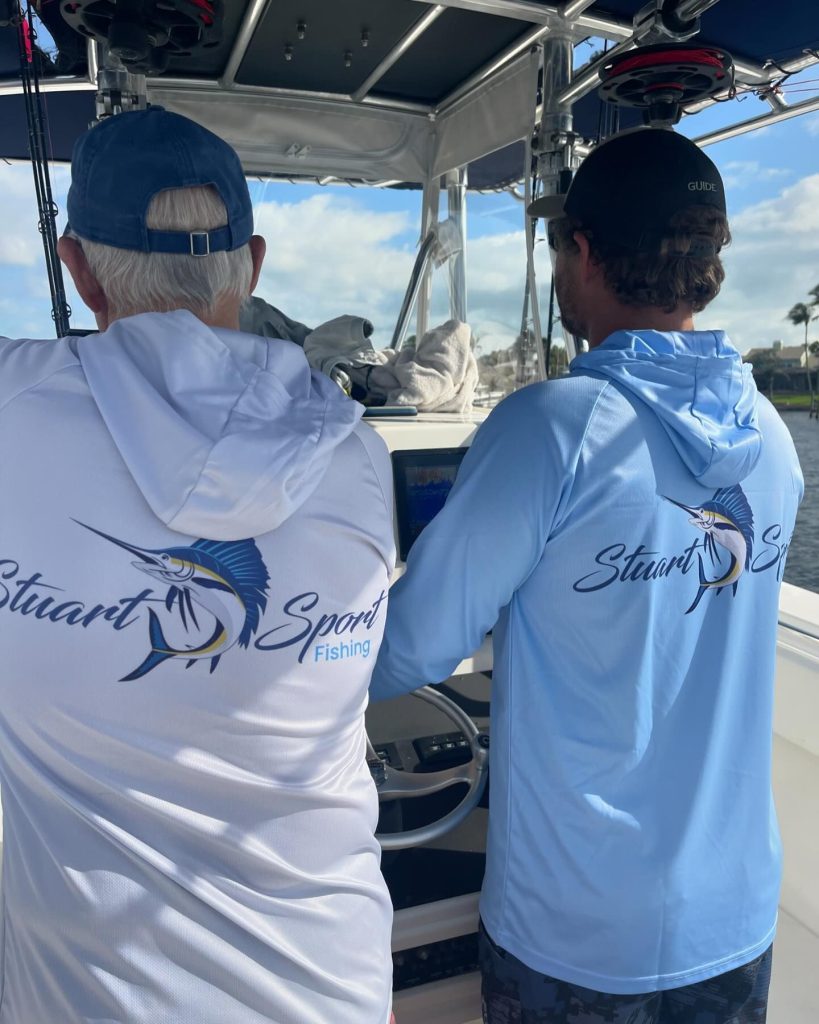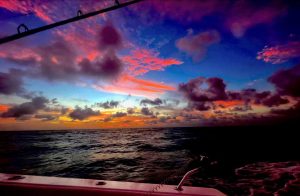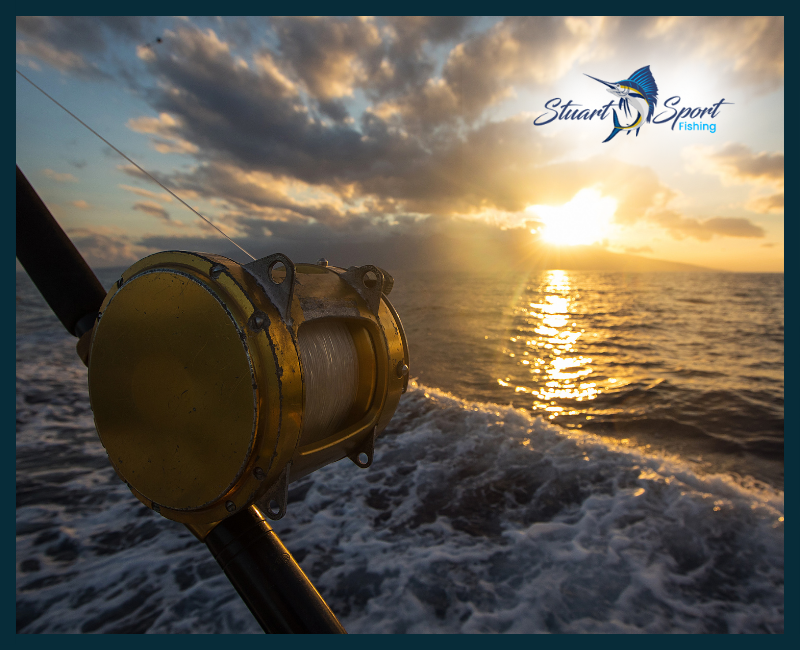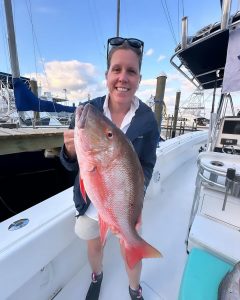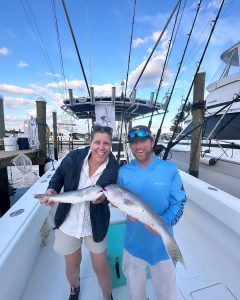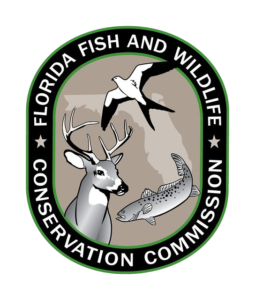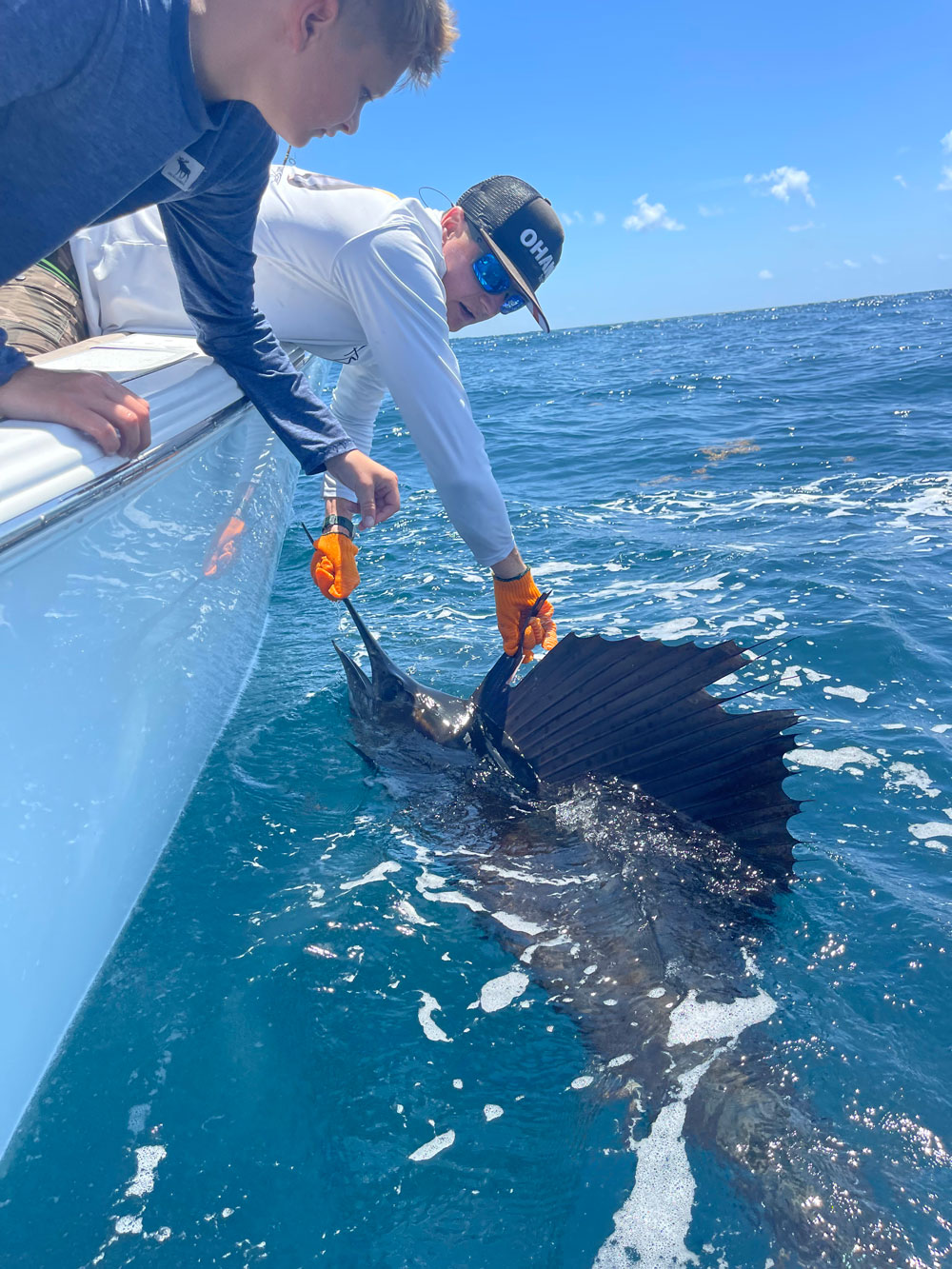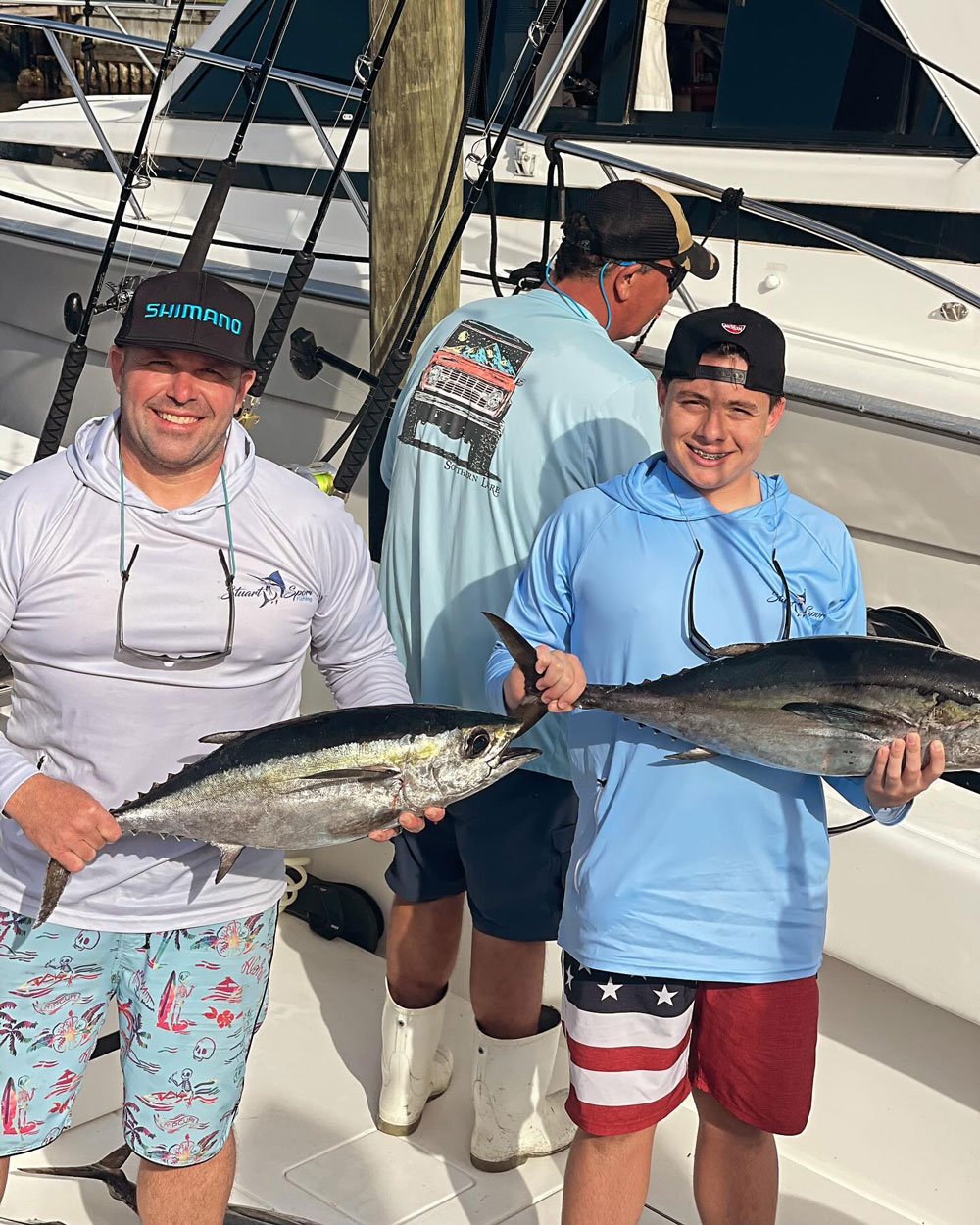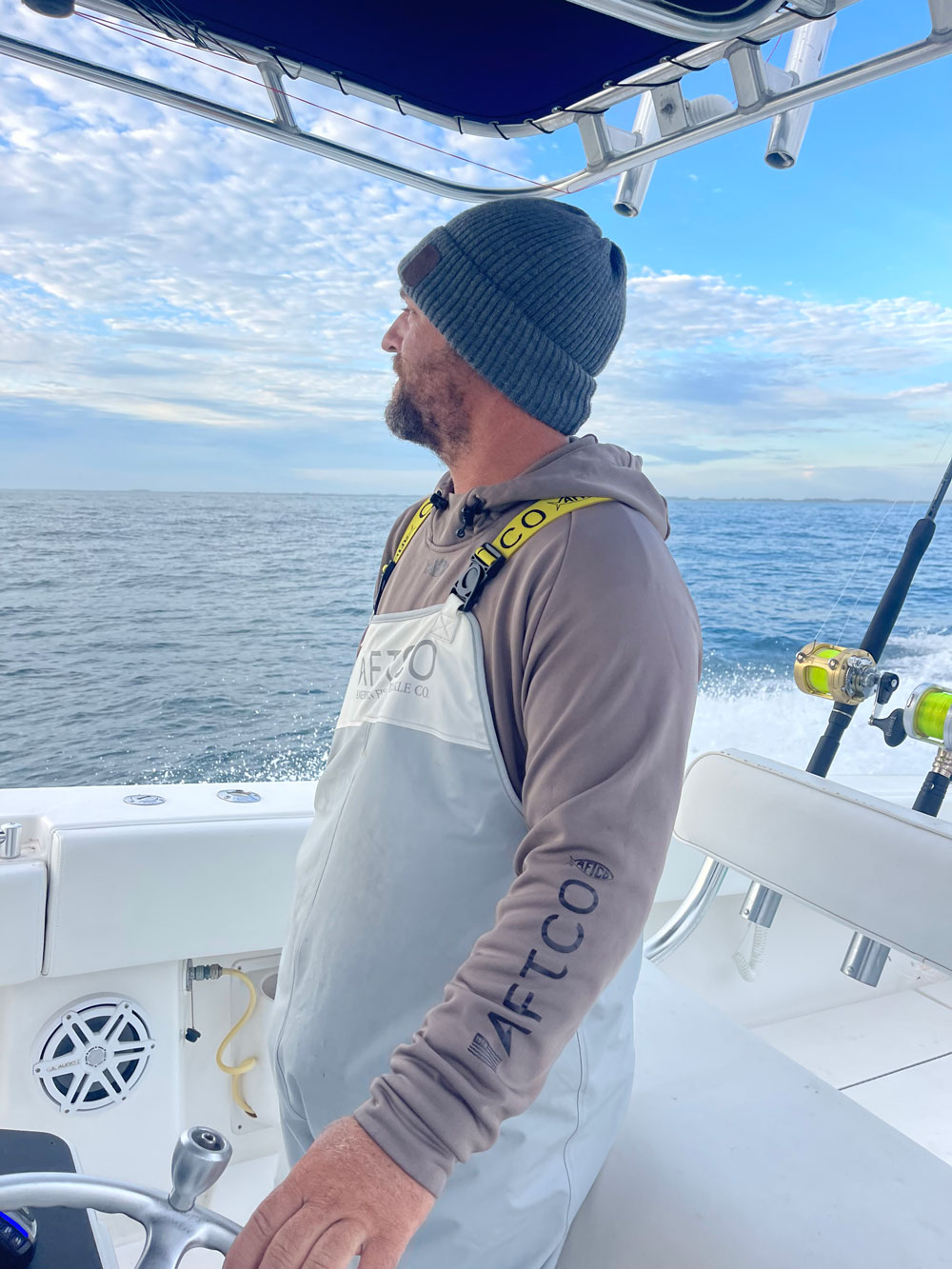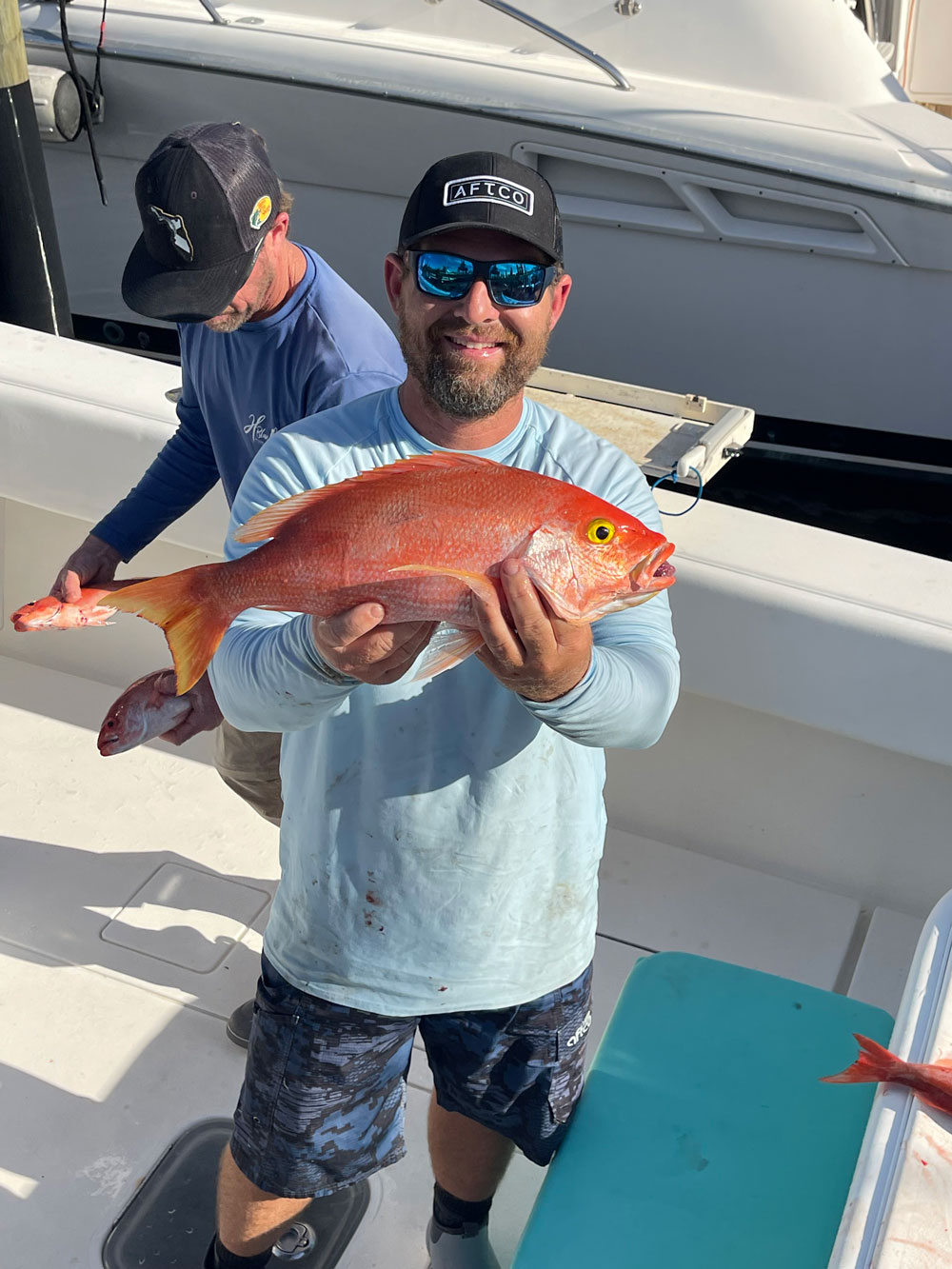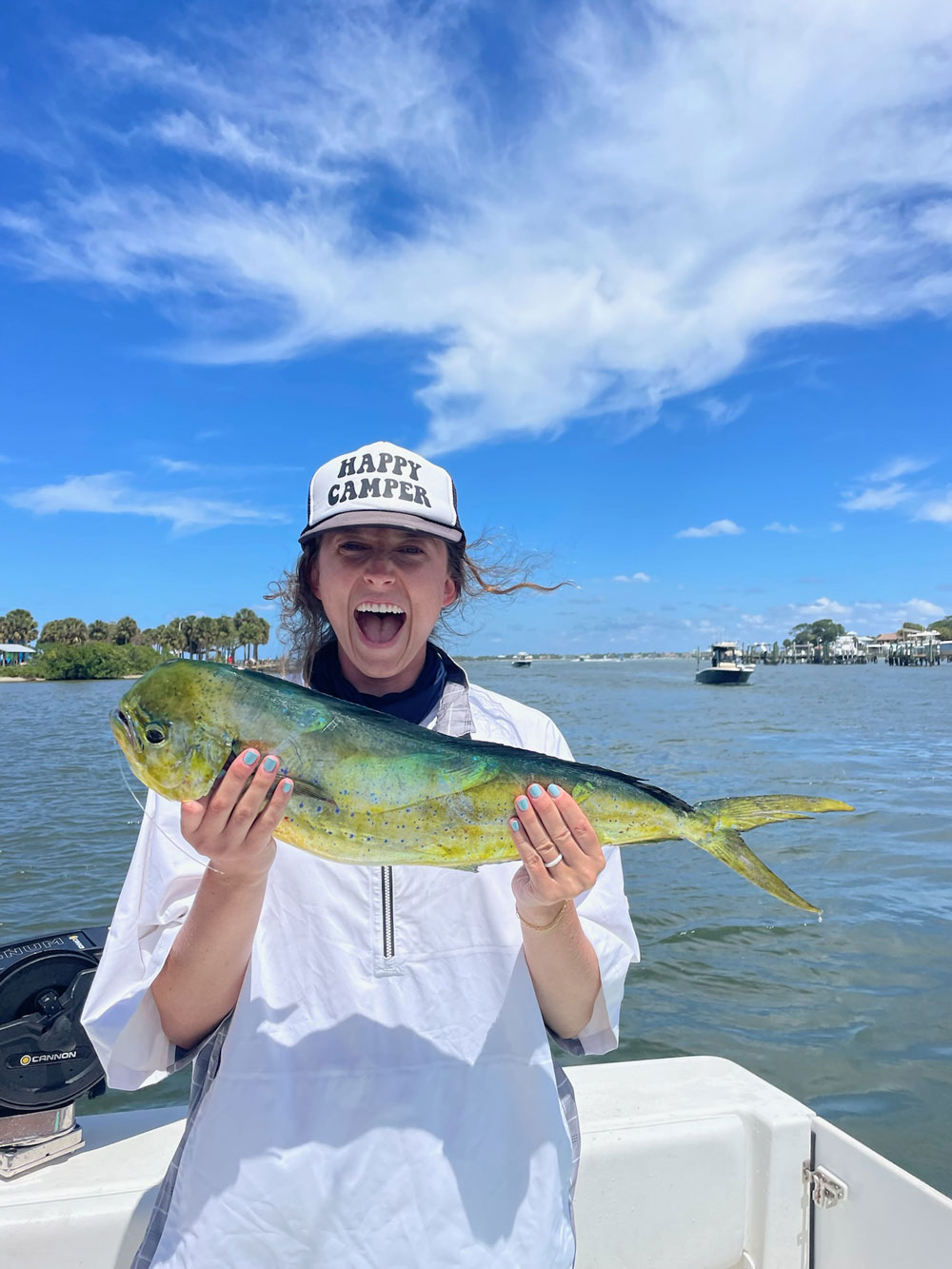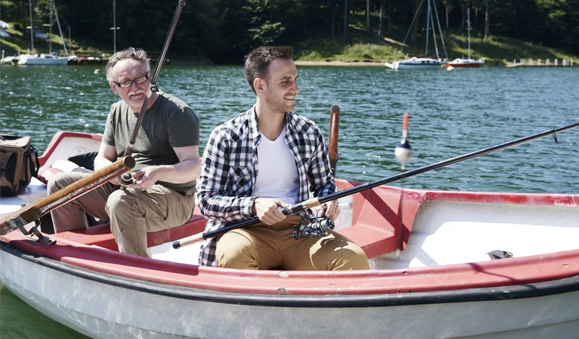Embarking on your fishing journey requires the right equipment to ensure a successful and enjoyable experience. A well-chosen setup will provide comfort, functionality, and the necessary tools to land your catch. Learn the essential components of a beginner fishing setup here. Our own Captain Chris can also help you with your questions and your selection — and remember when you fish with us, you don’t need to bring anything but some sunscreen and good energy!
Anglers new to the sport face a bewildering array of tackle options. There are forests of rods to choose from, long rows of reels to consider, and lures of every possible shape and color lining shelves that never seem to end. It’s hard to know where to start, isn’t it?
But getting the right gear as a new fisherman doesn’t need to be an exercise in frustration. While you won’t be prepared for all types of fishing, every species, or every situation, with just a few basics, you can get started on what will become a lifelong passion.
Today, we’re going to discuss those basics, recommending a complete beginner fishing setup for you. Let’s get started.
Your first rod
While there’s a world of rods out there waiting for you to try, beginner anglers are probably best served by a light-power, fast-action option.
“Light power” refers to the amount of force it takes to make a rod bend, and this directly impacts how much pressure you can apply to the fish you’re fighting through your reel, line, and hook. Action, by contrast, tells you where on the rod that bend will begin, and bears directly on sensitivity as well as the “sharpness” of your hookset.
Simply put, more powerful rods are stiffer and can pull harder and fight larger fish. Slower actions are more “whippy,” bending along their length rather than starting near the tip and remaining pretty straight throughout.
We recommend a light-power, fast-action rod for a beginner fishing setup for several reasons.
First, they’re more than capable of catching species like Bluegill, Crappie, Perch, Trout, Smallmouth Bass, Largemouth Bass, Walleye, Channel Catfish, Croaker, Spot, Flounder, and Speckled Trout. That covers a lot of fishing ground! That power and action make these rods sensitive, allowing you to detect light strikes and timid bites.
Second, a rod like this will force you to learn to play and fight fish rather than simply reel them in. That skill-building is essential to you becoming a better angler. You simply won’t have the power to muscle big fish, and instead, you’ll need to learn to use the drag on your reel and other techniques to win your battles.
And finally, a light-power, fast-action rod is simply fun to catch small fish with and an absolute heart-pounder when you do hook a nice Bass, Walleye, or Speck. It’ll feel like you’ve caught a submarine, and the smile on your face will be something you’ll remember for the rest of your life! Fun is what we’re after on the water, and we promise that a good rod like this will more than deliver.
We at USAngler recommend considering these options: the 6-foot, light-power St. Croix Premier. You can expect uncompromising quality from handle to tip from this St. Croix. Another option, and one that’s more budget-friendly, is the Ugly Stik Elite. This 5-foot, 6-inch rod sports a campsite blank of fiberglass and graphite, and while it’s a tad slower than the St. Croix, it’s still plenty sensitive and very, very tough.
You could also go with a rod and reel combo. Check out USAngler’s guide to learn how to choose a combo that’s right for you: Best Fishing Rod and Reel Combo.
Your first reel
A good reel begins with an awesome drag system.
A drag does more than create resistance for a fighting fish; it also protects your fishing line from sudden shocks. To accomplish these two tasks well, the drag system needs to allow a smooth, continuous release across its possible settings. Any sudden starting or stopping can spell disaster.
Beyond this, you want to ensure that your reel has a reasonable line capacity, as you’ll need to cut and retie as you damage your line in fights. A good reel will also cast smoothly, offer enough speed to keep your line tight when you’re fighting a fish that makes a direct run at you, and have high-quality gears that provide plenty of torque and smooth operation.
The spinning rods we’ve recommended above should be paired with spinning reels of an appropriate size. Here are USAngler’s recommendations for a beginner fishing setup:
Great options to consider include the Pflueger President in size 30 and the Shimano Sedona FI 1000. Both are simply revered by legions of anglers, and while there are more expensive models out there – here, we’re thinking about the amazing Shimano Vanford 1000 – these budget-friendly options are a very good place to start.
Line
Three line types dominate the fishing industry: braid, fluorocarbon, and nylon monofilament. For beginner anglers just setting up, the best overall choice is probably monofilament. It offers several significant advantages.
First, it’s very abrasion resistant and can really take a beating without failing. That may not seem like a big deal until you have a fish make a circle around a gnarly stump, run over a submerged rock, or twist your line across a barnacle-encrusted piling. Mono can take this abuse better than the alternatives, and we use it ourselves the vast majority of the time.
Second, it ties easily and offers excellent knot strength. Knot strength is a big deal, and if you’re going to have a line failure unrelated to abrasion, it’ll be from a knot pulling through. Monofilament is simply superior in this respect, hands down.
Finally, monofilament offers shock resistance, preventing sudden movements of the fish from breaking your line. In hard fights, especially with light line, plenty of shock resistance can be the difference between landing a nice Bass or impressive Speck and having your line snap.
The rods and reels we’ve recommended are rated for lines between four- and eight-pound monofilament tests.
Hooks
There’s no one hook to rule them all, and if you plan to fish with live bait, you’ll need an array of options.
For species like Bluegill, Sunfish, Perch, and Trout, you’ll want some size #6 and #4 baitholder hooks. They’re the right size for these species and do a great job of keeping nightcrawlers, crickets, and other live bait on your hook.
For Crappie, you’ll need a few light-wire Aberdeen hooks in sizes ranging from #4 to #2. These fish have paper-thin, very delicate mouths, and though they’re the size of other Panfish, a larger hook is required to prevent them from tearing free.
Catfish, Speckled Trout, and other larger predatory fish demand a good circle hook that matches the size of the bait you’re offering. Circle hooks are self-hooking, meaning that the fish hooks itself as it takes your bait. All you need to do is start reeling, and the fight will be on! You’ll need to pick up a few circle hooks ranging in size from 1/0 through to 3/0.
Floats and split shot
One of the most effective ways to catch fish is by suspending live bait beneath a float. And while you’ll see plenty of red and white bobbers on the water, they’re vastly inferior to slip floats of all kinds.
The magic of a slip float is that it can be reeled up to the end of your rod, allowing accurate casts. Red and white bobbers can’t do this, and you’re forced to contend with three or four feet of bobber, line, and hook every time you cast.
Slip floats are available in a wide array of shapes and sizes, each designed for different purposes. We recommend two styles for a beginner fishing setup: a simple balsa float like the Thill and a larger South Bend Catfish Pole float.
The Thill is perfect for Panfish of all kinds, and we own and fish them ourselves. They’re simply amazing with worms, crickets, leeches, or wax worms on a hook beneath them.
The South Bend is an excellent choice for larger species like Catfish, Walleye, or Speckled Trout. They’re able to buoy large pieces of cut bait or huge minnows, and they’re easy to see as they rock in the water. These floats will require a bit of a split shot to weight them properly so that they sit just right in the water, and those extra ounces let you cast them farther, too.
Pliers
Fishing pliers are a must for every angler. Not only are they essential for placing and removing a split shot, but they can also reach deep into a fish’s mouth to remove a stubborn hook, cut wire for leaders, and perform a hundred other tasks you encounter on the water.
Good pliers have a comfy grip, springs to keep the jaws open, and the teeth and cutting power to do the work you need. We at USAngler use KastKing’s Cutthroat 7-inch Fishing Pliers ourselves and can’t recommend them highly enough.
Lures
Last, but certainly not least, you’ll need a small selection of lures. And while your arsenal will grow over the years, you only need a few lures to get started. Here’s what we recommend at USAngler:
Wordens Original Rooster Tail is an in-line spinning lure that you should always have in your tackle box. That’s no exaggeration. Fish a few sizes, like the ⅛-ounce and ¼-ounce, and throw white, black, chartreuse, and rainbow to mix things up when the bite is low.
You can catch everything from Brook Trout to Largemouth Bass on these little wonders. They cast well, and they’re very easy to fish: just reel them through the water fast enough to keep them off the bottom.
A second lure to never leave home without is a Rapala Original Floater. For decades, this floating crankbait has caught fish, and by cranking it steadily or letting it float as you jerk it to dive briefly, fish can’t get enough of this guy.
Strike King’s Chrome Sexy Shad is a great lipless crankbait choice, and when retrieved, it wriggles enticingly and really rings the dinner bell for any fish that’s home.
And finally, try Dardevle Spoons. They don’t look like much, but never judge a book by its cover. These metal lures create amazing action as they sink, fluttering like mad, and on the retrieve, they wriggle for all their worth. Throw the ¼-ounce in silver, gold, and red and white.
Knots
Knots aren’t something you buy but something you learn. And any serious angler will tell you that they’re one of the most critical aspects of fishing success. A badly tied knot won’t hold, while the same knot tied properly will grip like super glue. For a beginner fishing setup, you only need to learn one knot for all your lures and hooks: the Uni.
It’s exceptionally strong, very shock resistant, and easy to tie and learn. Practice it at home in your spare time until you can tie quickly, and never look back! Later in your career, you can learn other useful knots like the Palomar, Kreh, Double-Uni, and Surgeon’s Knot. But for now, the Uni will do everything you need.
A Fishing License
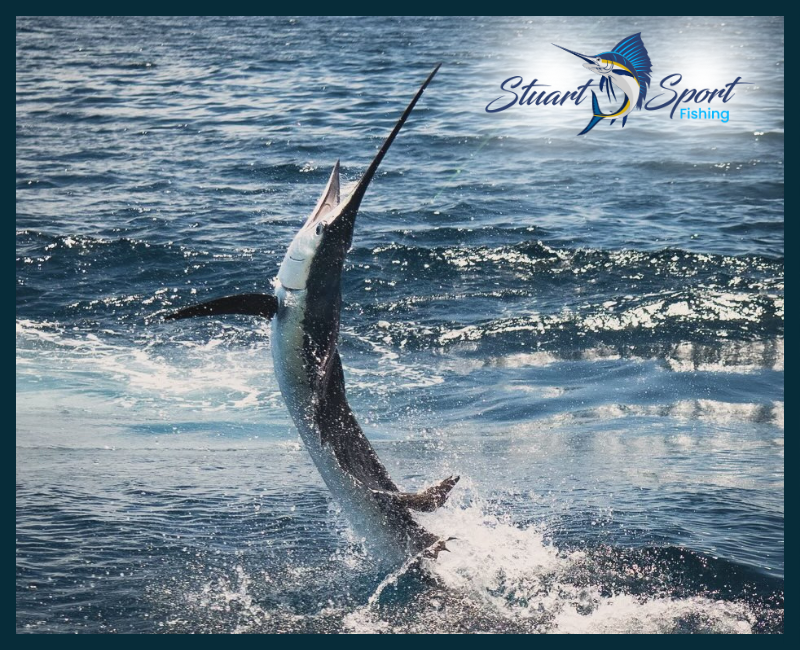
Before you make your first trip, you need to buy a fishing license in the state you live in, and study the regulations to know the legal limits on the fish you catch. These vary from state to state and even sometimes season to season, so know what you’re doing! A quick trip to your local Walmart or your wildlife management agency’s website can get you a license in just a few minutes.
And there you have it – everything you need for a beginner fishing setup! Now get ready, get out on the water, and fish on!
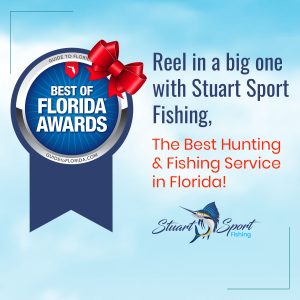
Start your fishing adventure with the right equipment. Rent a fully equipped boat from Stuart Sports Charters and enjoy a hassle-free day on the water. Call us today at 772-834-7661 and create lasting memories. Dive deeper into our Instagram here.
Reference: [https://fishingbooker.com/blog/beginner-fishing-setup/]


